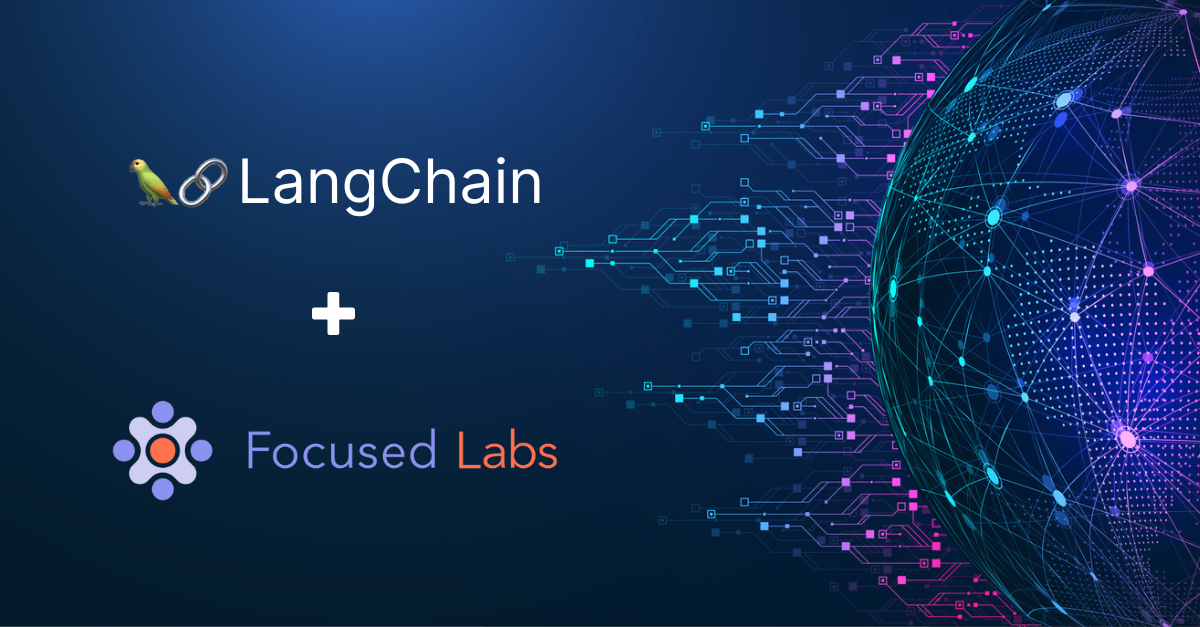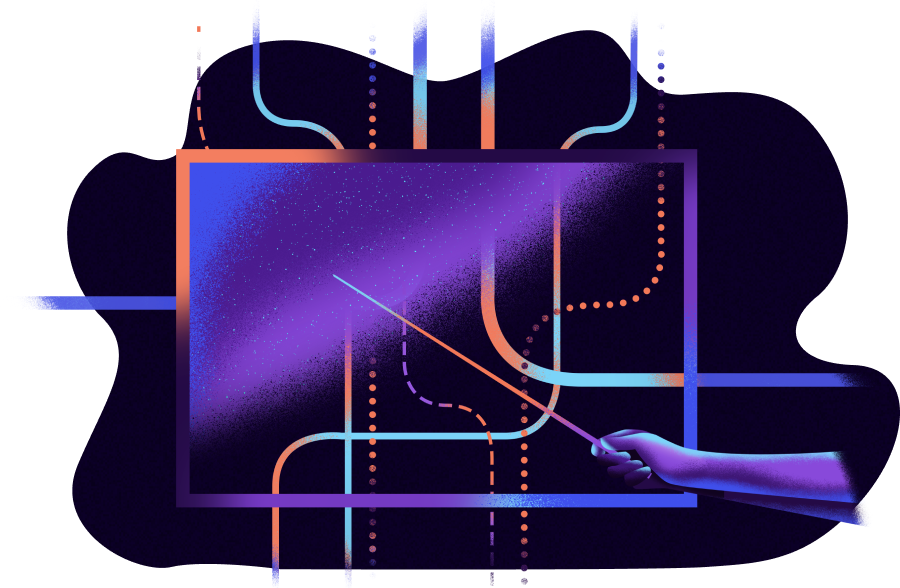A whopping 70% of large-scale digital transformation projects fail, according to research from McKinsey. That may sound like a depressing statistic to open with, but it’s valuable to go into an important project like this with clear eyes and a solid digital transformation framework in place to make sure you’re in the 30%.
Digital transformation is a planned business strategy that aims to move a company away from outdated, tedious analog processes to digital ones; but that’s only one part of the whole picture. Plus, digital transformation itself is just a concept. It needs precise planning and effective change management to see it through to success. That plan is called a digital transformation framework.
Keep reading to learn more about digital transformation frameworks, what benefits such an undertaking offers your company, and how to implement it successfully.
What Is Digital Transformation?
Digital transformation refers to an organizational overhaul spearheaded by the strategic integration of cutting-edge digital technologies, like leveraging automation and the power of AI. Digital transformation also encompasses the integration of new business models and processes. It represents a paradigm shift for how organizations operate, leveraging digital technologies to reimagine operational processes, drive innovation, and cultivate enhanced efficiency and agility.
Digital transformation does not mean making monumental changes or completely revamping systems all at once. It’s a gradual process that builds upon existing infrastructure and legacy systems while incrementally modernizing operations. While it is an enterprise-wide endeavor encompassing new technology platforms, operational adjustments, and even some cultural change, one goal of any well-organized digital transformation should be to ensure minimal disruption to day-to-day operations.
What Is a Digital Transformation Framework?
A digital transformation framework is a blueprint used to guide an organization through a digital transformation. Think of it as a roadmap that your company uses to navigate the landscape of digital transformation. It’s a structured model that aims to incorporate new technologies and business processes across various segments of the enterprise.
A digital transformation strategy can have many components, including but not limited to:
- Overarching vision and strategy. An effective framework will define clear objectives and the end vision for the project.
- Leadership and governance responsibilities. The framework may define who is responsible for overseeing the transformation, whether it’s IT leaders, executive leaders like the company’s Chief Information Officer (CIO), or a combination of both.
- A plan for modernizing legacy IT systems and technologies. Outdated systems can impede innovation and hinder scalability. Part of any successful digital transformation will involve assessing your organization’s current IT infrastructure, identifying areas for improvement, and choosing which technologies align best with the overall transformation strategy.
- Digital strategy initiatives. A digital strategy methodology is just one part of the broader digital transformation, designed to solve very particular problems within your organization. For example, a digital strategy initiative could be developing a proprietary AI chatbot with the goal of increasing customer engagement.
- Data ecosystem. A transformation framework will use data analytics to inform decision making and innovation.
- Customer expectations. Frameworks may focus on understanding customer or end-user expectations and preferences to help guide the transformation through to completion.
- Performance metrics. A digital business transformation needs established Key Performance Indicators (KPIs), metrics, and benchmarks to track progress.
- Timelines. Transformation frameworks usually include a comprehensive timeline for the digital adoption to be completed. Often, large consultancies may extend project timelines to maintain continuous engagement. Be sure to choose a partner who not only shares your vision, but also delivers results efficiently and empowers you to take charge once they’ve left the building.
Remember that digital transformation doesn’t happen overnight — and it shouldn’t. Think of it as a marathon, not a sprint. Incremental modernization is essential for success. Replacing legacy systems or overhauling workflows in one fell swoop is a recipe for disaster.
The Benefits of Digital Transformation Projects
Digital transformation efforts aren’t undertaken without a clear picture of the advantages they will provide an organization. And while those advantages could look different depending on a company’s goals, digital transformation initiatives invariably provide some key benefits.
1. Streamlined Processes and Technologies
Digital solutions aim to enhance productivity and efficiency across your organization. A successful transformation will help your company better collect, catalog, and store data, resulting in the ability to use that data in more business processes to greater effect.
The changes brought about by digital transformation are felt in every area of the company, from sales and marketing to HR, customer service, and much more. Simply put, it streamlines every part of your business.
2. Better Customer Experience
The digital transformation process doesn’t just benefit your company internally. It also benefits your customers.
By upgrading your company’s digital approach, you meet customers where they are today — on their mobile devices, on apps, on social media, and on live chats. Your company can use digital transformation to automate redundant or low-level tasks, freeing up the department for greater customer engagement.
3. Data-Driven Decision Making
Data is a cornerstone of any digital transformation effort. With a proper framework, you’re able to harness and use that data effectively. And when you’re able to do that, you can make informed, data-driven decisions on strategy, marketing, sales efforts, and other key parts of the business landscape.
4. New Revenue Streams
Digital transformation can also open doors to previously untapped streams of revenue. Whether it’s developing and offering new digital products and services, monetizing data assets, or expanding into new markets facilitated by digital platforms, digital transformation gives your company new avenues for growth and profitability. Take Hertz, for example: In 2020, as the pandemic cut down on vehicle rentals, the development of a dispatching system, mobile application, and invoicing system allowed Hertz to fulfill last-mile deliveries for their retail partner — thereby unlocking a new stream of revenue.
Steps to Building a Successful Digital Transformation Framework
Remember: 70% of large-scale digital transformation projects fail. But you don’t have to be one of them.
That’s why having the right framework in place is so essential. A truly effective digital transformation framework will be made of solid building blocks that ensure a seamless process.
Here are six steps to build a digital transformation framework that works.
Step 1: Set the Objective
The starting point for any effective digital transformation framework is defining an objective (or multiple objectives). Craft a vision tailored to your organization’s precise needs, encompassing the perspectives of your leadership, stakeholders, teams, and clients and/or customers.
Some companies use digital transformation to implement technologies that help them reach digital maturity. Others might use the framework to reach new markets and enhance profitability. What your objective will be is entirely up to you and your company’s requirements.
Step 2: Craft Your Strategy
Outline specific goals that will guide the transformation process effectively. Think about what processes and operations within your organization need updating, and which ones need to be completely removed and replaced. Set benchmarks in your timeline, and construct KPIs and metrics to measure progress along the way.
Develop a structured approach that takes into account internal processes, customer requirements, and regulatory aspects when making company-wide changes. Remember to align this strategy with your organization’s broader goals.
Step 3: Select the Right Technology
Choose technology solutions that enhance productivity, enable data-driven decisions, and safeguard privacy while meeting any and all legal requirements. Whether it’s AI and machine learning for data analysis, the Internet of Things (IoT) for communication, or cloud-based services for data storage, there are many, many options.
The tech you choose will depend on your business. The technology needed for a large manufacturing operation probably won’t be the same technology a retail company needs. Just ensure you’re implementing technology that lets your teams be as efficient as possible and deliver customer-centric service to your end users.
Step 4: Implement with Clarity
Ensure that communication is clear and consistent throughout the organization during the implementation phase, and that everyone in your company is on the same page and speaking the same language. Remember: digital transformation doesn’t have to be daunting. It’s about aligning everyone in your organization and ensuring clear communication. That’s what ensures sustainability through to the end of the project.
Step 5: Embrace Continuous Innovation
While digital transformations do include short-term goals, they are most often longer-term endeavors. Things are bound to change at points throughout the process, and organizations that are set up to stay flexible and focus on adaptation — and even innovation — in the face of change will see the most success.
Stay abreast of changes in your market, the company, and the technology you use throughout the digital transformation process. This flexibility is what gives your company a competitive advantage when undergoing a transformation of this magnitude.
Step 6: Execute and Monitor
Remember those KPIs and other metrics you put in place during Step 2? Use them to assess the current state of your company, identify gaps or bottlenecks, and continue to define and refine objectives as you use the digital transformation framework to execute your company’s vision.
Don’t Make These Digital Transformation Framework Mistakes
There are some common pitfalls companies fall into when creating digital transformation frameworks. Watch out for these mistakes when crafting yours:
- Overlooking change management. Failing to have the right business leaders in place, as well as IT leaders and experts in place to guide digital strategy, can lead to a digital transformation project’s derailment.
- Prioritizing technology over strategy. Technology is certainly a major part of any digital transformation, but it’s not the only part. Remember, a digital transformation framework encompasses technology, company culture, customer experience, and more.
- Not including incremental modernization. Trying to do too much at once, or too fast, can cause a project to crash and burn. Your digital transformation framework must outline strategic modernization, allowing for incremental updates and adjustments over time.
- Ignoring your company’s organizational culture. Neglecting to align digital transformation efforts with organizational culture will lead to bottlenecks and resistance.
Looking to Build a Digital Transformation Framework?
Adapting in the digital age is a big undertaking — but it doesn’t have to be difficult. A digital transformation framework is the roadmap needed to turn concept into reality.
For business leaders ready to capitalize on the power of technology and embark on the digital transformation journey, Focused Labs is here to make the process streamlined, efficient, and effective. If creating a digital transformation framework — much less implementing one — seems overwhelming, our digital transformation consultants can help.
We prioritize incremental modernization, and our depreciation model means you’re not reliant on us once your transformation is complete. We’ll gradually depreciate ourselves as the project comes to its conclusion, ensuring your long-term success beyond the end of the contract.
Ready to get started? Contact us today to discover more about our services, pricing, and how we can help your organization thrive through the power of digital transformation.



![[Video] How Queer Eye helped me be a better consultant](https://focusedlabs.io/hubfs/FocusedLabs_November_2022/Images/9de38ec39718aab7d15ee1aa13e347c43a29f390-1000x420.jpg)


